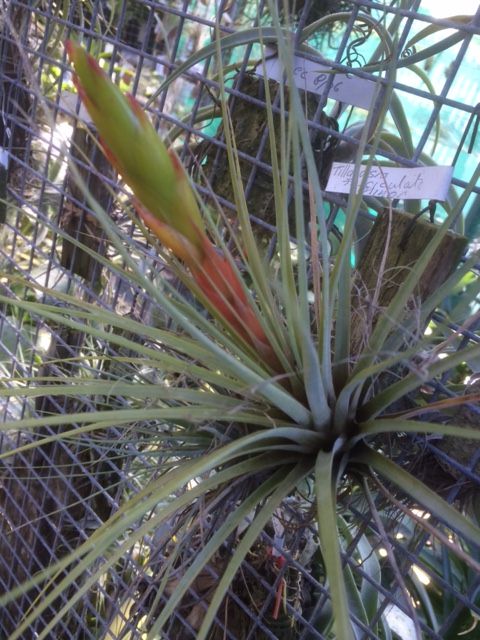
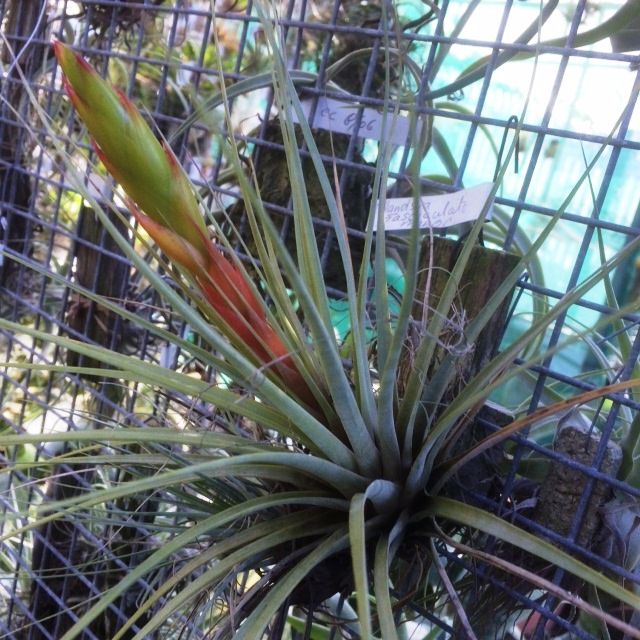
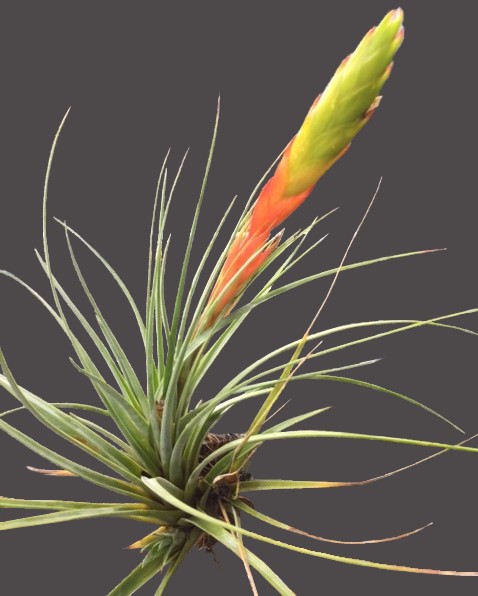
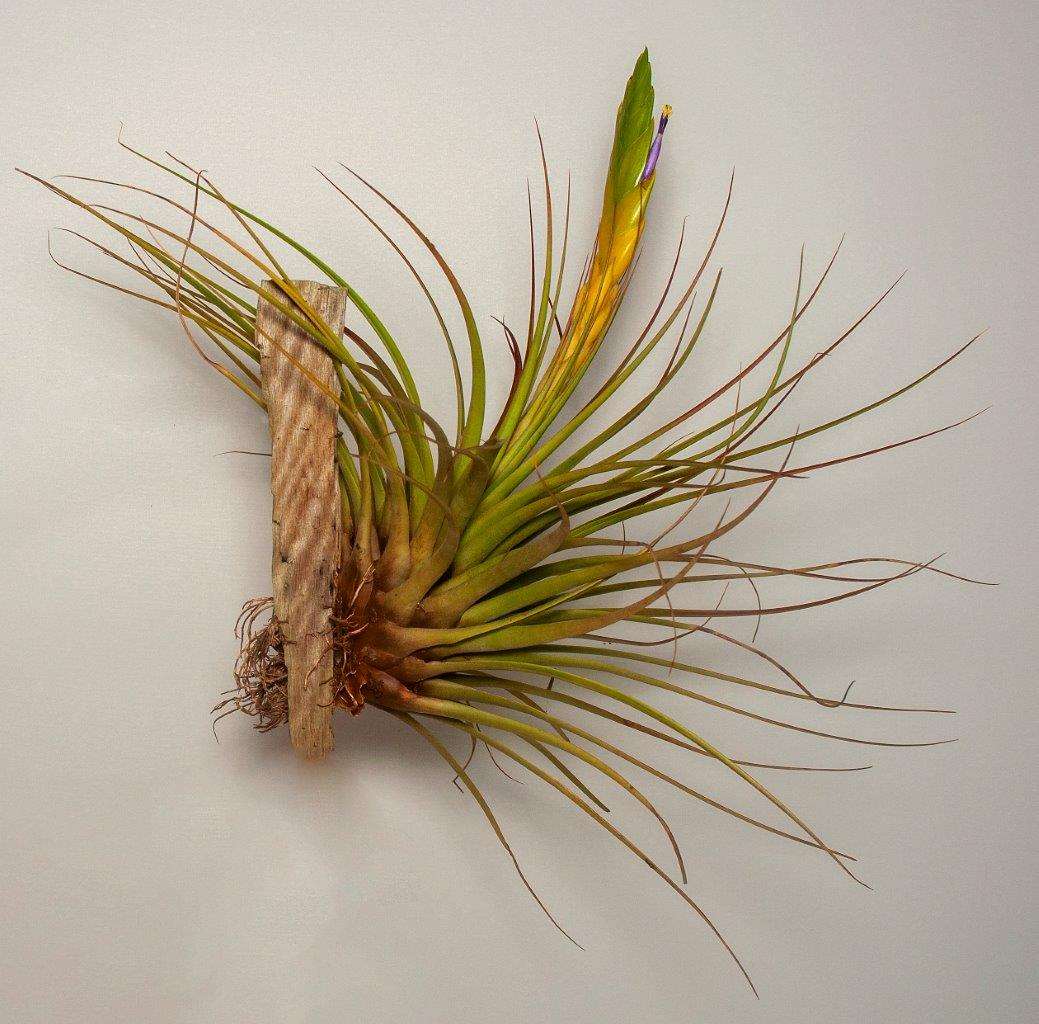
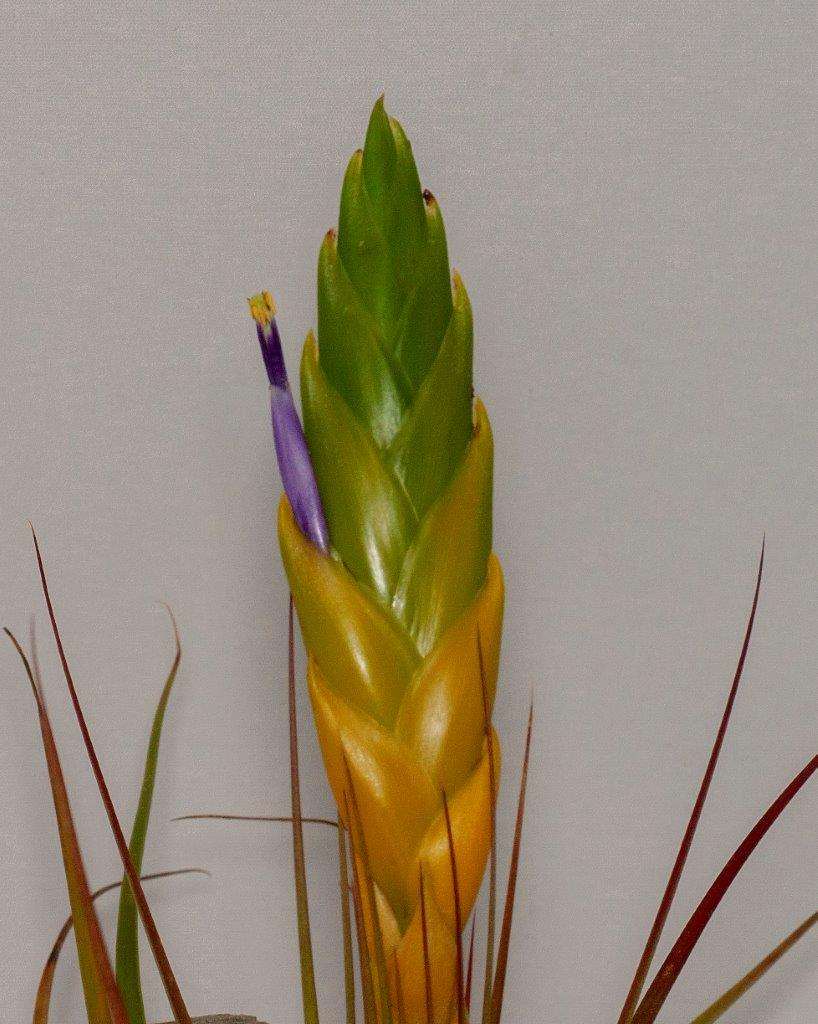
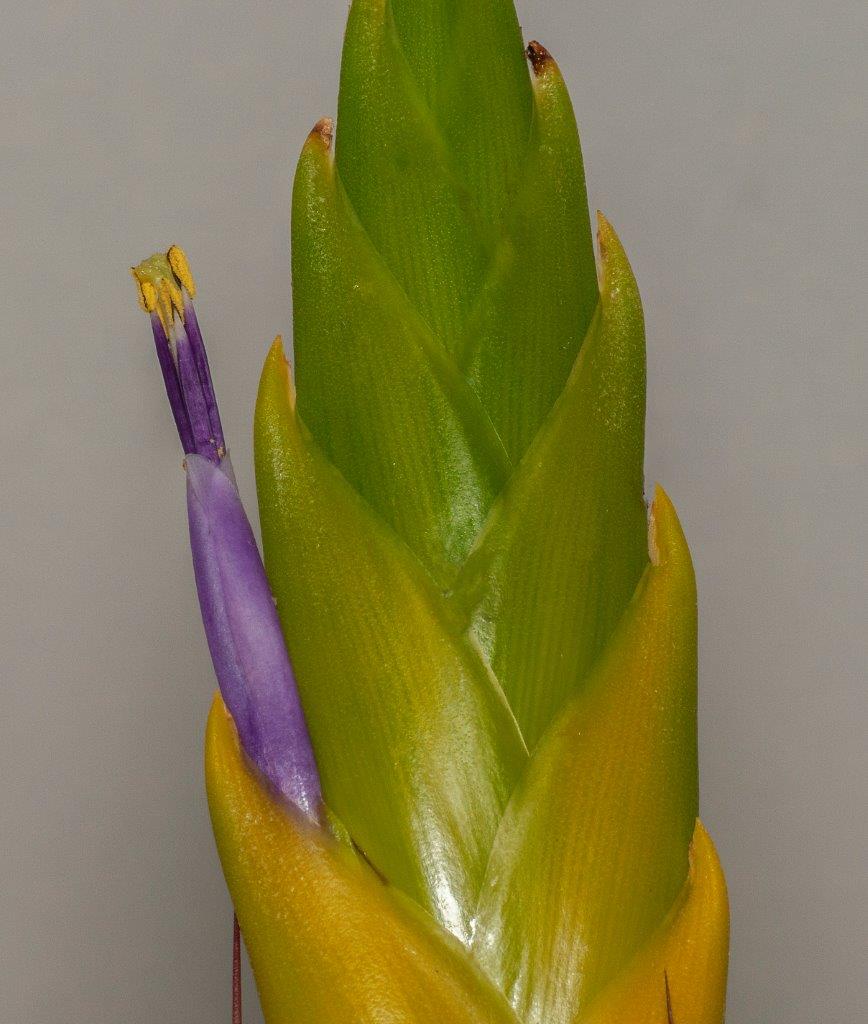
Tillandsia ‘Hal’s Nidus’ to the Aussies and ‘Coquette’ in the USA by Derek Butcher 9/2015
First, let us look at Tillandsia nidus described by Rauh in 1983 as a species found somewhere in Mexico some years before. We even had a wrong photo in Journ Bot Soc 31(5): 218-9.1981 and it was finally decided by Harry Luther that it was a natural hybrid between T. fasciculata x ionantha. Note that we still did not know where it could be found in the wild! We do know that by 1997 Bird Rock Tropicals nursery, California had it in their catalogue but no location. We do know that Renate Ehlers collected the plant in 2006 near Coatepec in the State of Vera Cruz, Mexico. We do know that with natural hybrids, back crossing occurs making it difficult to know what range this hybrid might have.
Now we go the Australia, where this plant became a Till discussion group relay discussion when Mark Supple of Newcastle showed a photo of a flowering plant of his so-called T. fasciculata ‘Minor’. Here we had the same name used for at least two different looking plants with the more common one having a single spike and it was eventually added to the BCR in 5/2015 as Tillandsia ‘Minor’. As you all know, I shudder at the use of such adjectives when linked to a species name because it means there are differences between this plant and the species, but nobody has bothered to define what are these differences. The advantage of the Till discussion group is that we are often terrible poker players and love to show our hand so others can get involved. This was no exception where it appears this plant started its Australian life in the 1980s when Hal Ellis from Victoria was importing plants with Garry Thompson. As is usual, offsets get exchanged and Chris Larson was not happy with the name ‘minor’ and started investigating. He even cornered Renate Ehlers at the Adelaide Conference in 1995. It was felt that the plant could be Rauh’s T. nidus which was still a somewhat unknown quantity at that time. Nothing further was done other than Chris and Maurice Kellett changing their plant name to T. nidus.
This then is what we know about the plant in the wild but can we link a plant imported in the 1980’s to T. nidus or T. xnidus ? The safer option was to give this clone the name of T. ‘Hal’s Nidus’ and to use Mark Supple’s photo as an example. The reason why I picked the name is that if your plant can be traced to Hal Ellis or has a suspect name like ‘nidus’ you can at least follow the threads. There are certainly other plants that look similar to this plant and have doubtful pedigree which could be linked to ‘Hal’s Nidus’ but that is the decision of the owners.
As for the future where someone is trying to identify a plant at least we have photos of what we consider typical T. fasciculata, T. nidus and T. ‘Hal’s Nidus’.
Now to phase 2. In May 2015 Ross Little reported that his Pinegrove Nursery ledger revealed Tillandsia fasciculata hybrid – "Guatemala BBK #2662, 5/86 Gleeson" AND he was still growing the plant under this name. It looked like ‘Hal’s Nidus’. May 1986 is a long while ago and what happened to the offsets that escaped from Pinegrove? Were they grown on as T. fasciculata hybrid? I suggest very little happened but with growers trying to guess father, for example T. nidus and T. velutina. T. velutina is an interesting one because it was not described until 1994 and Tillandsia fasciculata x velutina has recently gained notoriety with a Gardening Guru on TV. As you also know I dislike formulas because you never know who coined the formula unless you ask questions.
Because nobody has reported importing other than these two references all these lookalikes should be linked to ‘Hal’s Nidus’.
Now to phase 3. On 8/2011 Dennis Cathcart registered a T. ‘Coquette’ for an alleged natural hybrid found in Guatemala which Harry Luther had decided was probably (rotundata x capitata) . We do not know who may have imported this to Australia but we do know that Pam Hyatt was selling TX137 at the World Conference in Cairns in 2008. TX137 became ‘Coquette’ too. John Olsen tells me that there seemed to be few for sale but he bought one which still has TX137 on the label.
Are you interested in having an almost correct name on your plant and I don’t mean formula? Nobody has dissected a (rotundata x capitata) or even a (fasciculata x query) to show they are the same even though they look it. If you can trace your plant to its origins you will know what name to use. If you cannot, then put the problem at the door of those who change labels without recording their actions and just call it Tillandsia hybrid.
Acknowledgements:
Thanks to Ross Little and Geoff Lawn for their valued input.